Uncovering Mexico’s 17 Underground Pools You Can Swim In
Among all the popular things to do in the gorgeous towns of Tulum, Playa del Carmen, Puerto Morelos, or Cancun that comprise the Riviera Maya, taking a dip in the local cenotes consistently ranks among the best. Don’t forget about the ones around Valladolid they are just a stone’s throw away.
So, how to choose the best cenotes to visit? It depends on what you’re looking for: colorful fish, snorkeling, diving, or simply floating in a tranquil body of water for hours on end. Check out our list to determine which of these unique cenotes are the right choice for you!
What are cenotes?
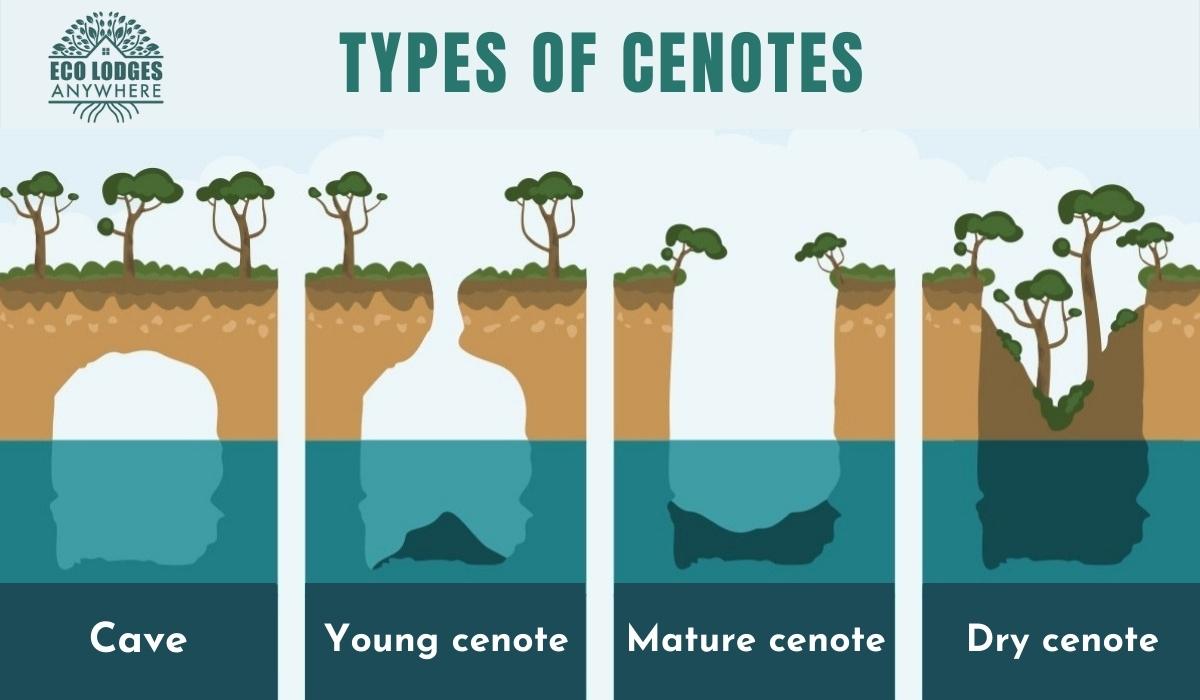
Cenotes are underground chambers or caves that contain groundwater. Basically, it’s a natural sinkhole where the cave’s ceiling collapsed. There are a number of different types of cenotes. The most common kinds of cenotes are cave, semi-open (young), and open (mature) cenotes. There are also dry cenotes, but they aren’t half as breathtaking!
Are there cenotes all over Mexico?

Not really. There is an influx of cenotes in Mexico’s Yucatan Peninsula as the world’s longest underground river runs deep there, connecting all the cenotes. The 95-mile long Sistema Sac Actun was discovered in 2007, but in 2018 they discovered that it is connected to Sistema Dos Ojos making it a more than 200-mile cave system. Not all are accessible, but you can find plenty of beautiful cenotes you can dip in in the province of Quintana Roo along Riviera Maya and in the province of Yucatan around Valladolid.
Cenote Dos Ojos – The deepest
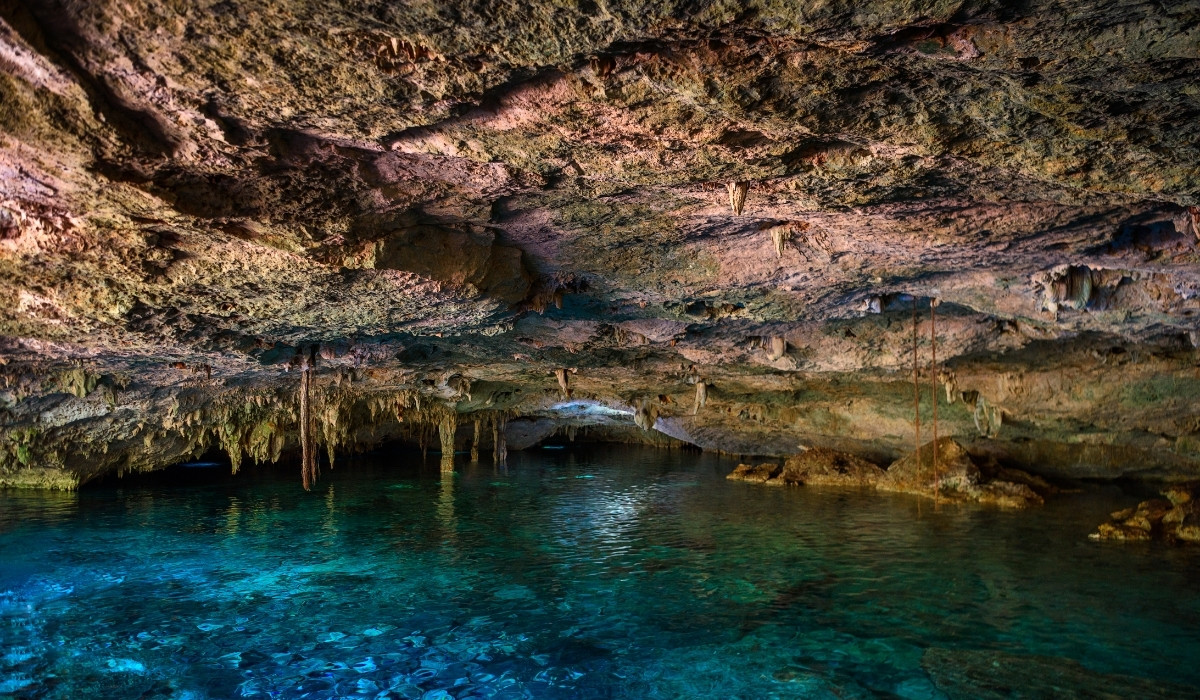
Dos Ojos Cenote is a pair of connected cenotes (dos ojos translates to ‘two eyes’ in Spanish) that is one of the most popular and hence most crowded with scuba divers and snorkelers. It is also safe to swim there as comfortable 25 degrees keeps the water constantly clear and refreshing.
Cenote Dos Ojos is located just 15 minutes from Tulum inside Parque Dos Ojos together with Cenote Jaguar, Cenote Nichte-Ha, Cenote El Pit (deepest, with a depth of 120 meters!) and Cenote Los Monos (The Monkeys).
Gran Cenote – Very popular
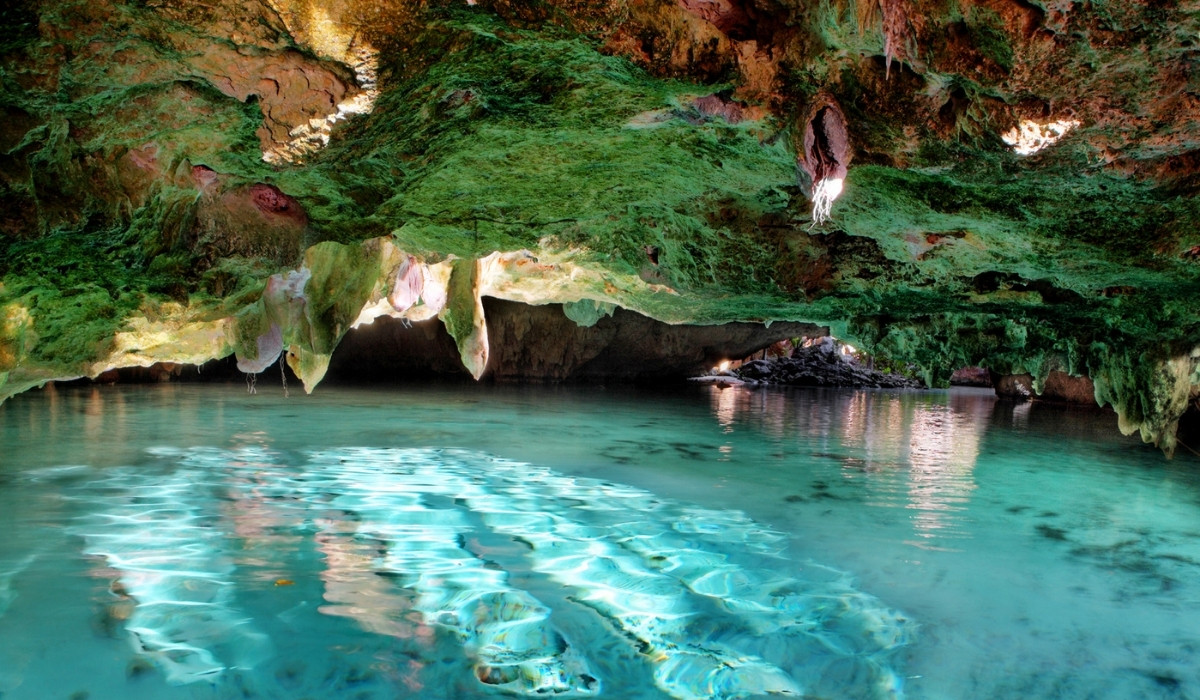
One of the best cenotes in Riviera Maya, the Gran Cenote is only four kilometers from Tulum’s town center and accessible on foot. At Gran Cenote, you can snorkel, dive, sea turtles, bats that flit through the caves, see tiny fish, palm trees, and water lilies. In January or February, it’s not unusual to see toucans popping their bright yellow beaks out of the surrounding jungle!
It can also be quite crowded, be sure to avoid early if you want to enjoy it in peace.
Cenote Calavera – Off the beaten path
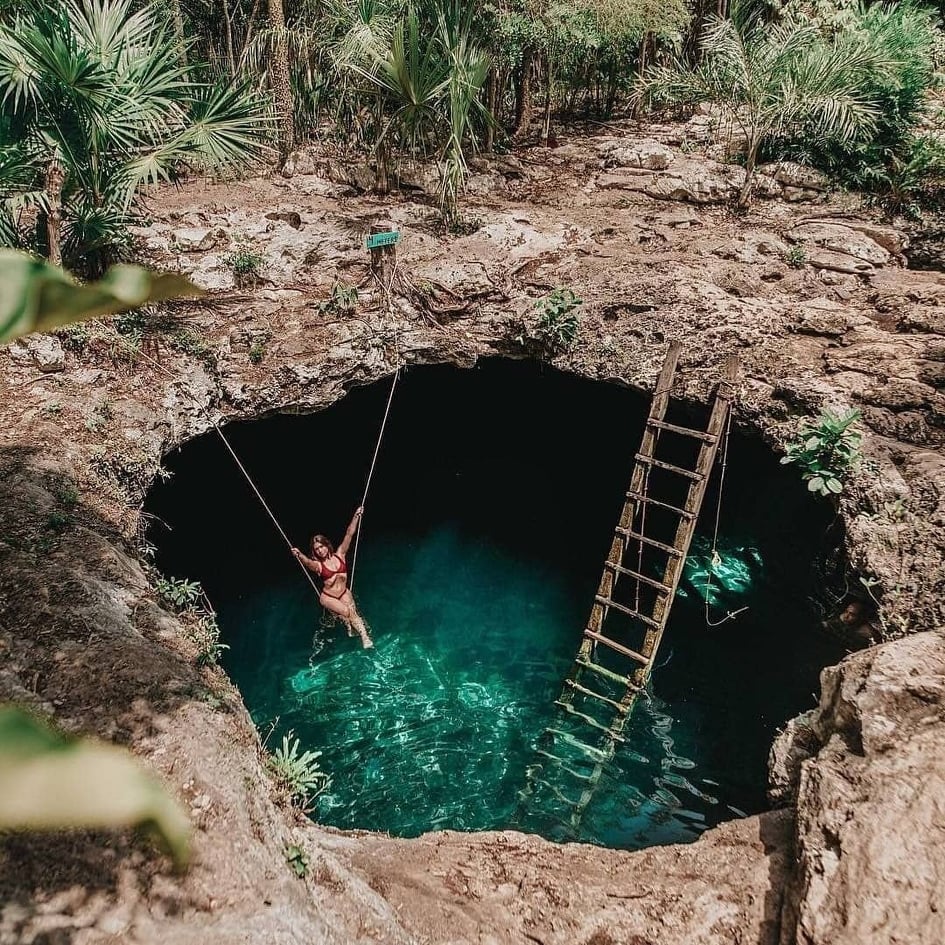
Cenote Calavera is among the most dramatic cenotes in Riviera Maya. Calavera means ‘skull’ in English, but don’t worry, you won’t find any skulls here. This water feature was named after the arrangement of two small pools and one large pool that resemble the eyes and mouth of a skull.
It is a bit isolated so not as popular and crowded, more like a hidden gem off the beaten path.
Cenote Escondido y Cristal – Open-air “swimming pool”
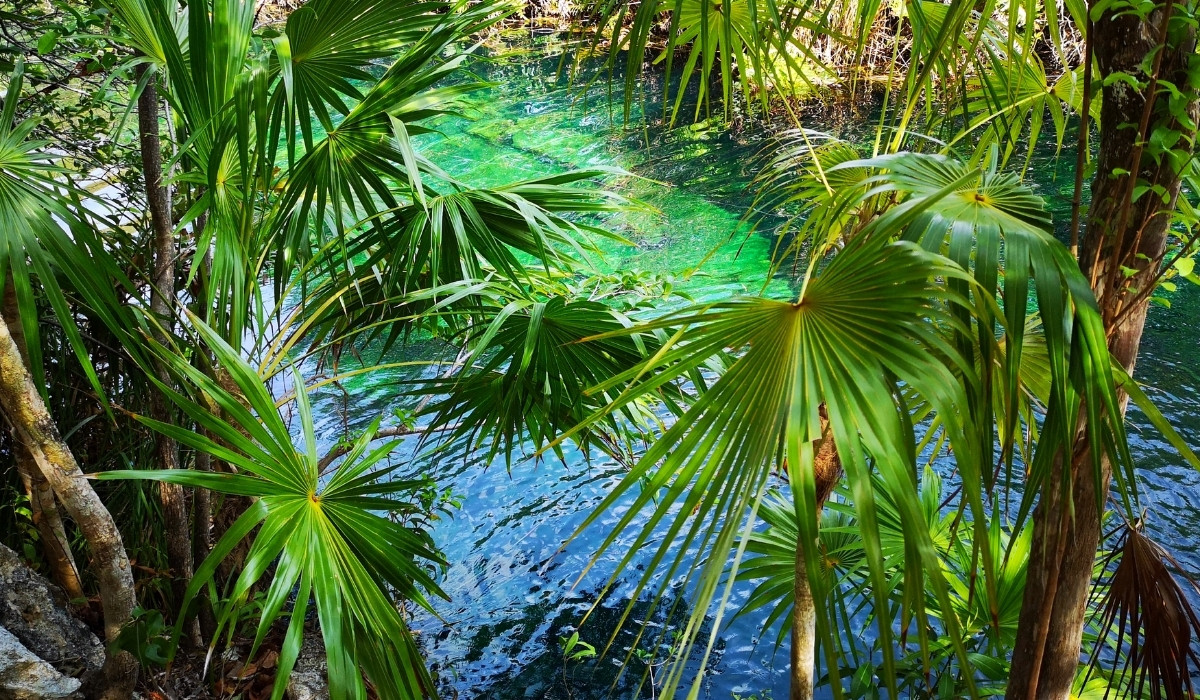
Another great cenote in the Riviera Maya is Escondido. Cenote Escondido translates as “Hidden Cenote,” which makes sense considering it has far fewer visitors than some of its neighbors.
Located practically adjacent to it, Cenote Cristal offers visitors a peaceful soaking experience in its refreshing waters. In addition to swimming in the cenote, there is a popular diving platform where adventurous visitors can jump into the sparkling waters below.
Laguna Kaan Luum – Actually a massive lagoon
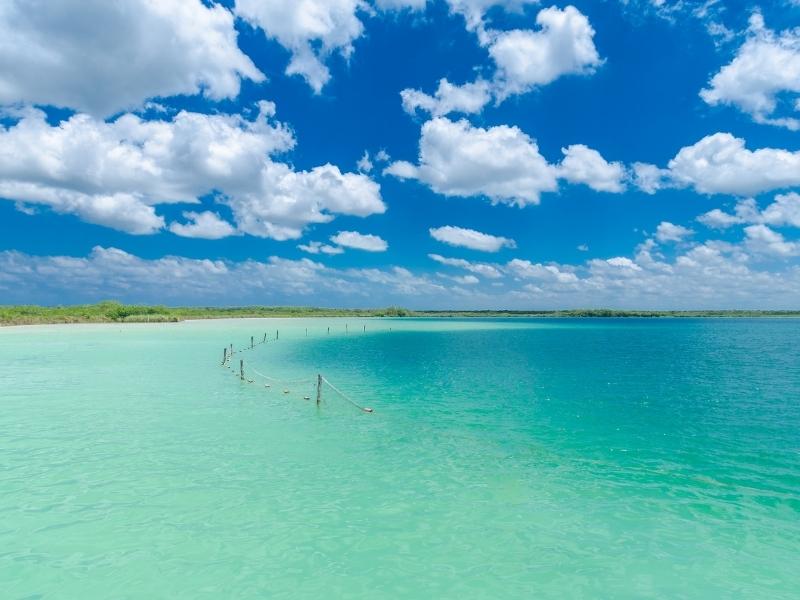
They say Kaan Luum Lagoon is one of the best-kept secrets around Tulum. It is a massive open-air cenote that looks more like a lake, hence they call it lagoon rather than cenote. Standing at the end of the pier with turquoise green water behind you is definitely an Instagram-worthy view. Due to its size, the deepest part is closed. There can be unexpected currents that can be dangerous to encounter. The shallow waters on the other hand are calm and clean.
Cenote Jardin del Eden – Trully a Garden of Eden
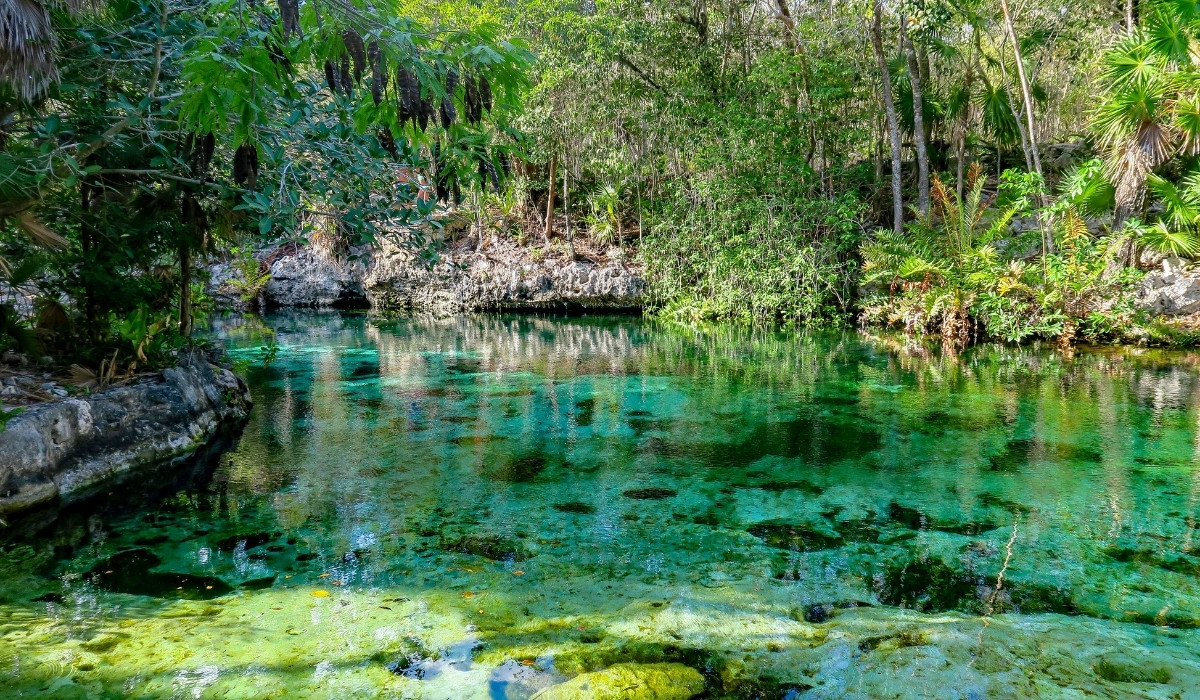
A beautiful cenote set in the jungle, Jardin del Eden is surrounded by lush vegetation and wildlife.
The depths of these waters have been the home of many species of tropical fish, eels, and even turtles. There are submerged rocks in the middle of the cenote that you can stand on to rest – be forewarned, keep moving if you don’t want your feet nibbled on by tiny fish! They don’t hurt, just tickle really, but can be unnerving if you’re not expecting it!
Cenote Chaak Tun – Eerie vibes
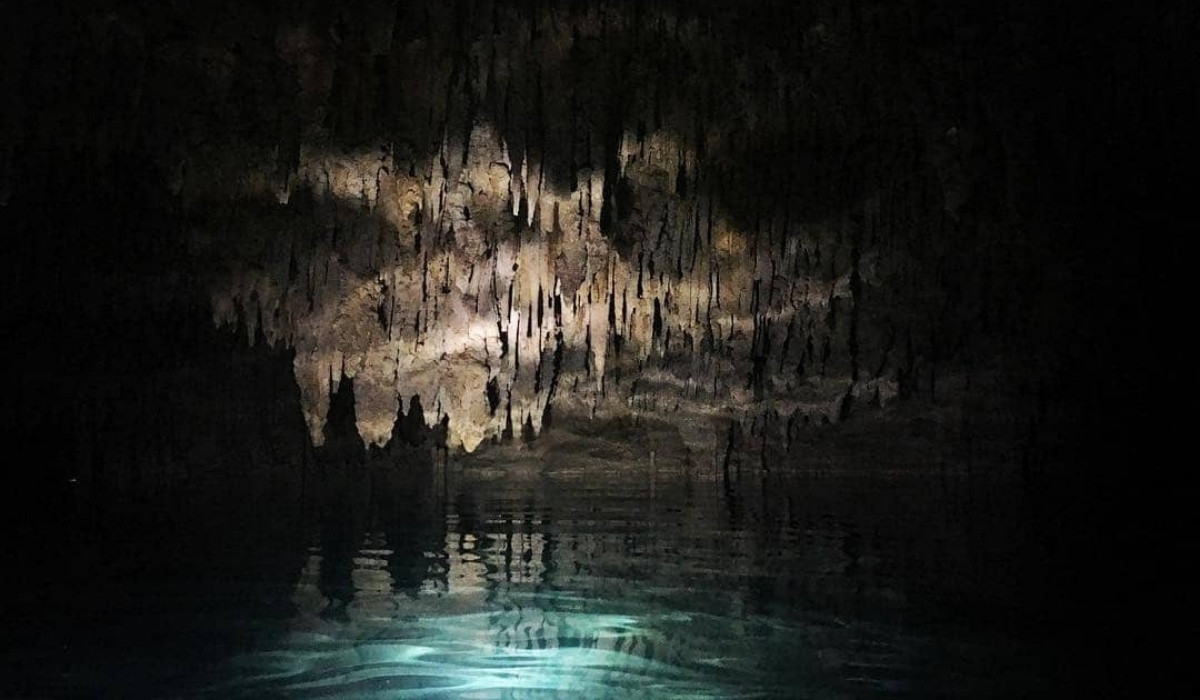
You should definitely take some time to visit Cenote Chaak Tun if you are visiting the beautiful town of Playa del Carmen. Warning: this is not a cenote for the faint-hearted. As it is almost completely covered (with only a slight opening), you’re likely to see bats lurking – and not much else, given how dark it is!
Cenote Azul – Family-friendly
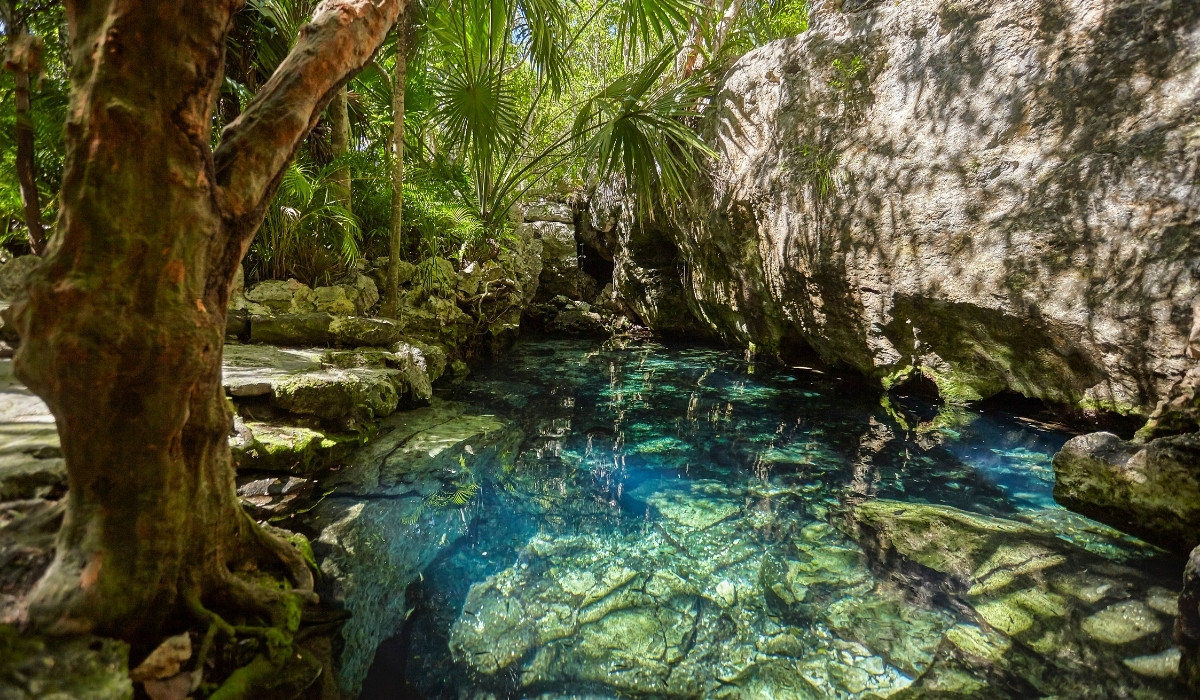
The beautiful open Cenote Azul lies approximately halfway between Playa Del Carmen and Tulum. Cenote Azul is renowned for its clear blue water (hence its name), which makes it perfect for swimming.
Given its natural beauty and close proximity to both Playa del Carmen and Tulum, you can imagine how busy it can get. However, its stunning clear blue waters and the mix of dark and white rock formations underwater make it a worthy contender on the list of best cenotes in Riviera Maya.
Cenote Manatee – Close encounters with manatees
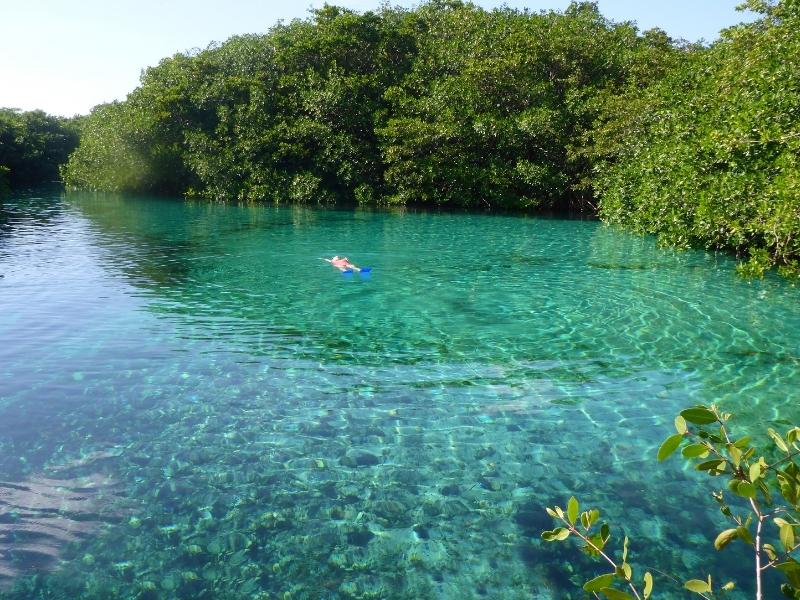
If you want to meet with manatees, an endangered species in Mexico, and observe them in their natural habitat, then you should add Cenote Manatee to your wish list. No wonder the cenote is named after them.
It is an open-air large cenote that looks like a river and is surrounded by lush green mangrove forest. Choose a tour with. local manatee expert to discover this cenote to its fullest.
Cenote Kantun Chi – It is a complete Eco Park
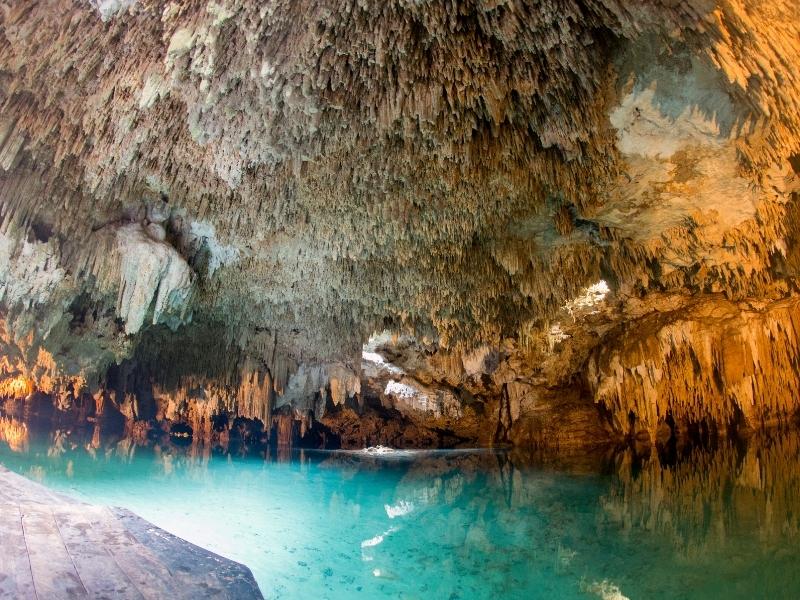
Visiting Kantun Chi Eco Park is a massive experience with 5 cenotes to visit and a subterranean river with stalagmites and stalactites everywhere you see. It is located right off the coast of Playa del Carmen.
Kantun-Chi (“Yellow Stone Mouth”), Saskaleen Ha (“Transparent Water”), Uchben Ha (“Old Water”) Zacil Ha (“Clear Water”), and Zihil Ha (“Reborn from the Water”) are all gorgeous places to visit. I bet you it will take you a whole day to explore this Eco Park.
Cenote Verde Lucero – Relatively quite

Verde Lucero means “green light” and well this one is various shades of green and blue that is true. It is located near the town of Vallarta equal distance from Playa del Carmen and Cancun.
It is a large open-air cenote with high cliffs around it. You can swim, dip, jump, or even kayak as it is quite sizeable. You can get in via steps or try the aquatic zipline which is right above it and just jump in.
Cenote Zapote – Dive with Hell’s Bells

This EcoPark is similar to Kantun Chi, where you can visit 4 cenotes (2 open and 2 underground) at the same time. Cenote Zapote is the most famous cave with this kind of unusual geological formations called Hell’s Bells. These are unique stalactites that got their name after their bell-like shapes. They can be quite small or they can reach a height of 20-30 meters. It is only for expert divers though as you need more than a snorkel gear to get close to them at approx. 50 meters deep.
Cenote Ik Kil – Awe-inspiring
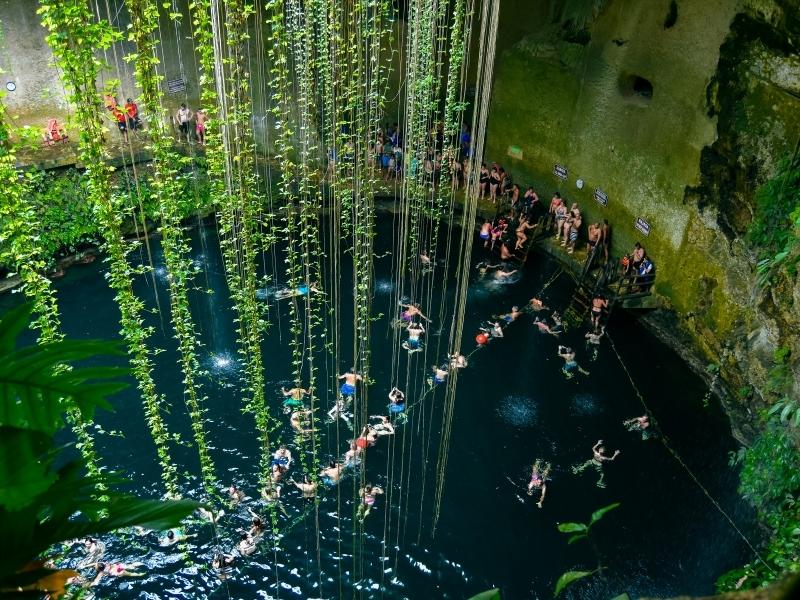
As it is close to the amazing ruins of Chichen Itza, this is one of the best cenotes in Riviera Maya and among the most beautiful in the area. Given its awe-inspiring natural beauty, you’ll typically have a lot of other guests sharing the space, so it’s not the best choice if you want to escape the crowds.
Cenote X’Canche – With a zip-line above
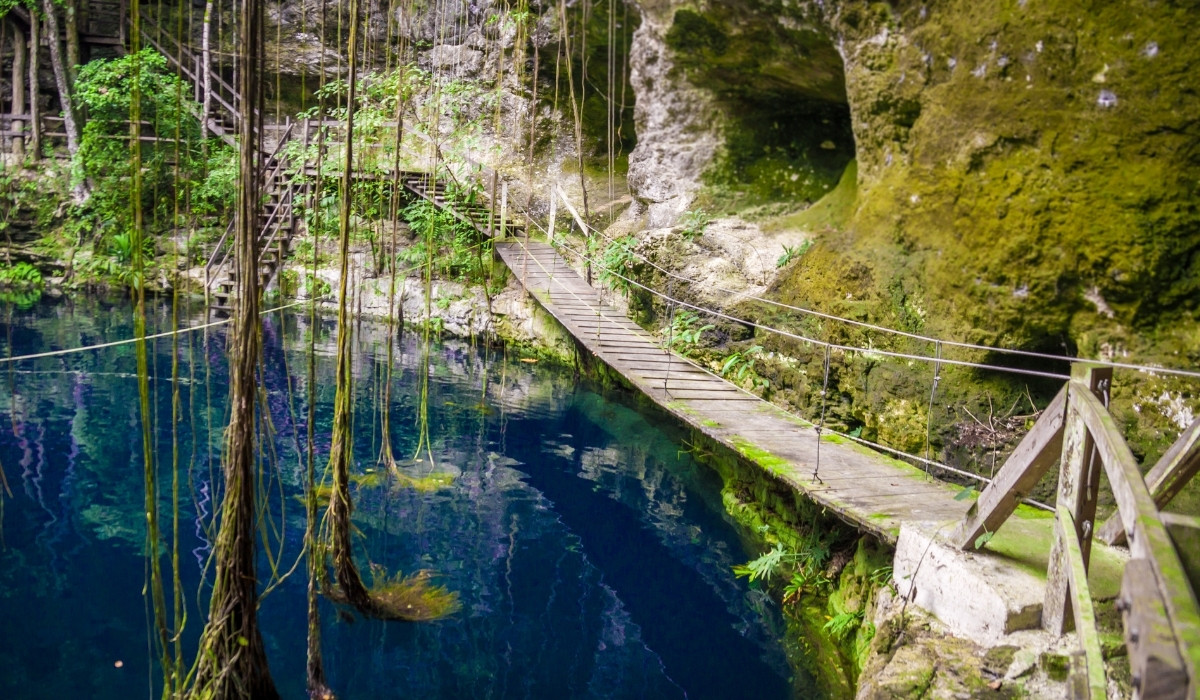
A magnificent and wild cenote, Cenote X’canche – sometimes called the Ek Balam Cenote because of its proximity to the famed ruins – is a must-see when visiting Riviera Maya.
This magnificent cenote, built in ancient times by the Mayans, has crystal blue water, tree roots that snake down deep into the earth, stone walls, wood staircases, a swing bridge, a zip line, and iguanas that scurry along the walls.
Cenote Suytun – Huge cave
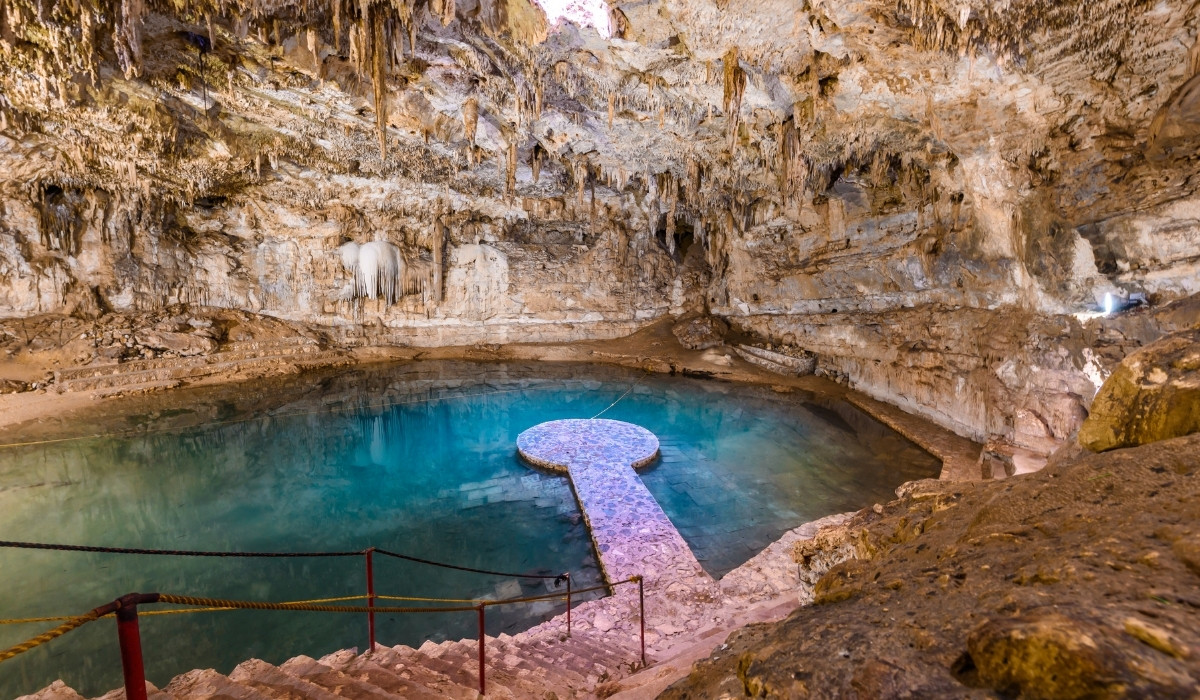
Cenote Suytun is arguably the best cenote in Riviera Maya, and perhaps even in all of Mexico’s Yucatán Peninsula! Its most notable features include a monolithic cave filled with turquoise water and an idyllic stone pathway that leads out to the middle of this fascinating cenote.
A cave cenote like Cenote Suytun is unique since it has a hole in the roof which allows natural light to enter the cave. Although a few hanging lights illuminate the cave’s interior, the steps themselves are quite dark.
Cenote Oxmán – Epic rope swing

Another favorite cenote in Riviera Maya is Cenote Oxmán, which you should not miss while in town! The Oxmán Cenote offers an epic half-day adventure from Valladolid. It features an enormous sinkhole with hanging vines, an epic rope swing, and a natural freshwater pool.
Cenote X’Keken (Dzitnup) – The bluest of them all
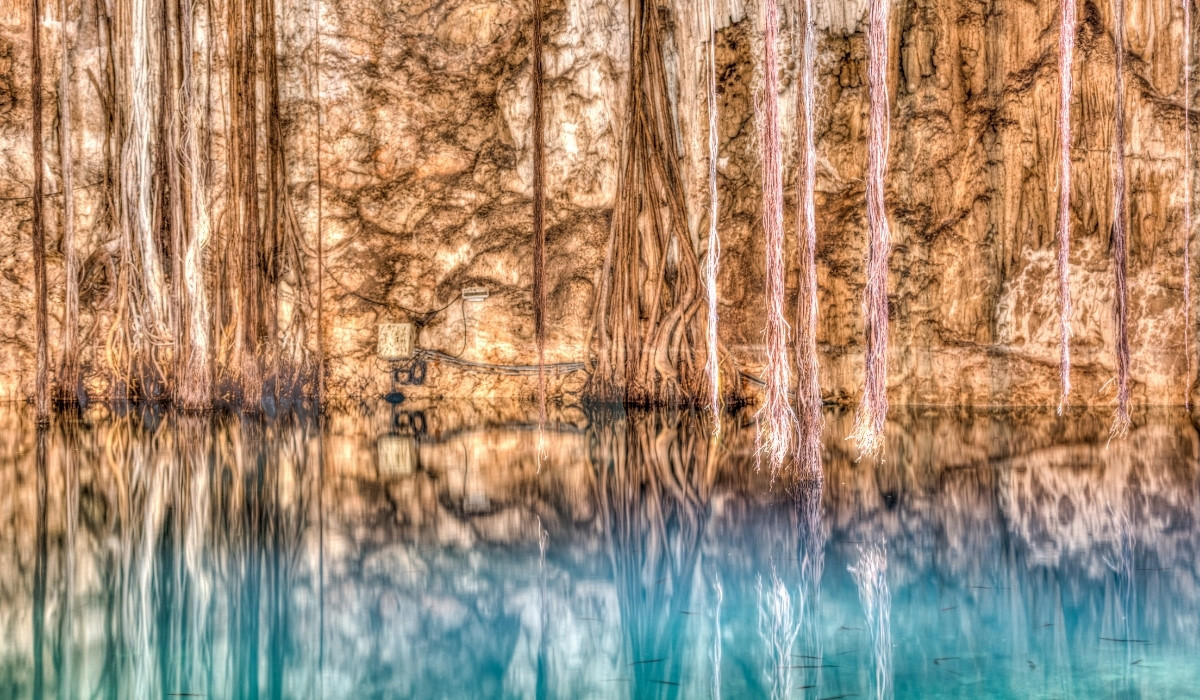
Local legend has it that the X’keken cenote was discovered when a farmer’s pig fell into it while walking. X’keken is the Mayan word for ‘pig’. During the day, the top of this cenote is bathed in a stream of light that creates some swoon-worthy photo opportunities.
With its limestone cave and only one opening, Cenote X’Keken provides the perfect spot for rays of sunlight to penetrate the water, displaying its natural beauty.
The 9 Most Sustainable Eco-lodges in Mexico
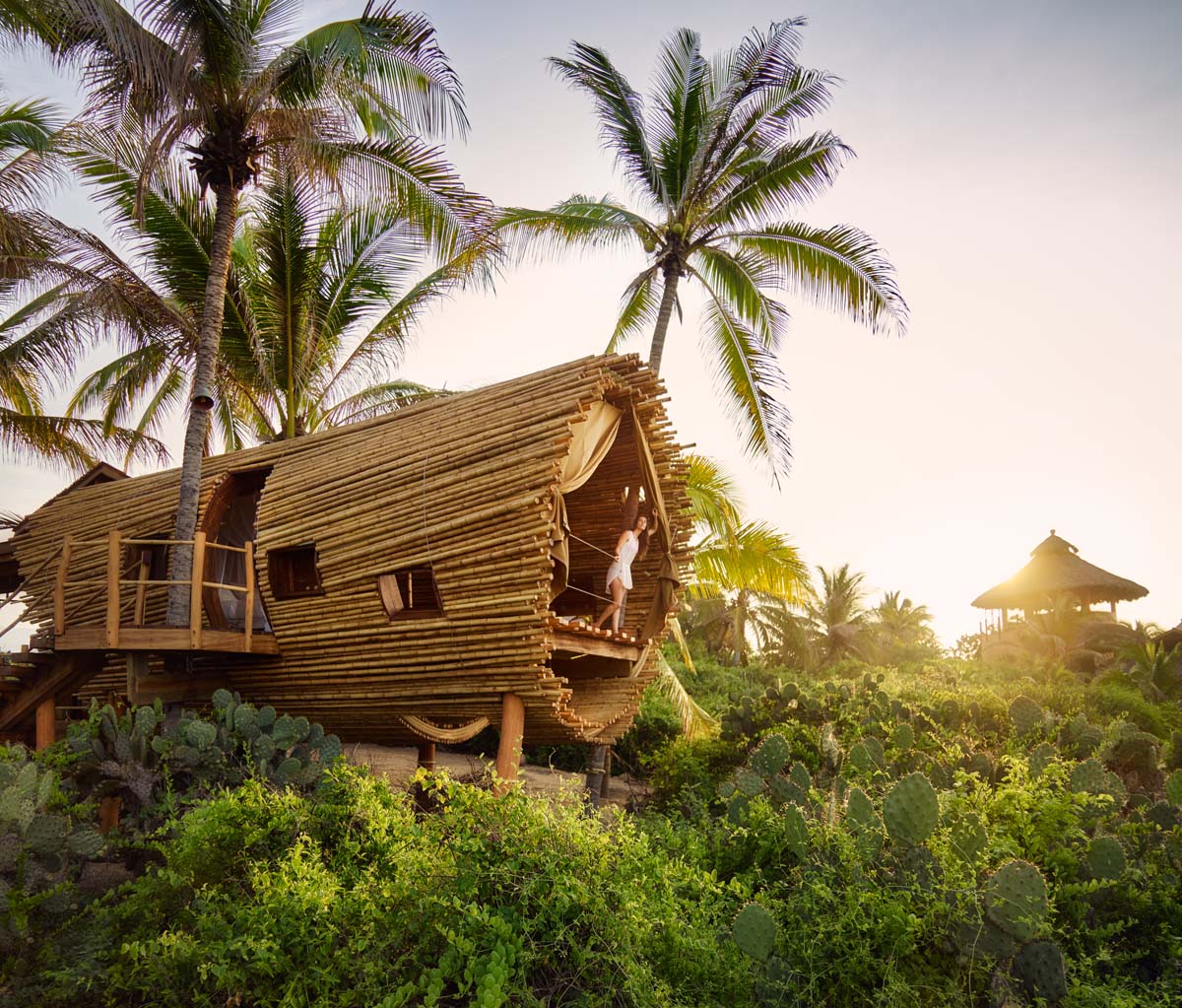
Stunning Mexican Waterfalls

Emese Maczko is a travel blogger behind Eco Lodges Anywhere. Having explored several destinations around Europe, the US, Indonesia, and Australia, and resided in Germany, the United Kingdom, and Luxembourg, Emese possesses a keen understanding of diverse cultures and an appreciation for the beauty of each destination she visits. She advocates for sustainable travel and ecotourism.


